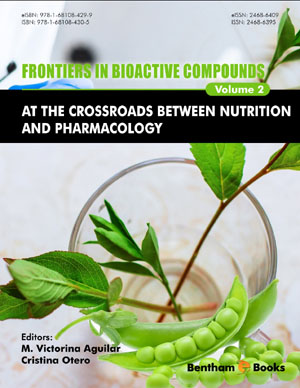Abstract
Several studies have shown that food is an important source of many bioactive compounds that may have a beneficial health impact on human body. Among them, bioactive peptides have extensively been studied and have proved to possess a variety of activities such as antihypertensive, antioxidant, anti-inflammatory, antimicrobial, and many others. These peptides can be natural constituents of foods but they can also be released from a parent protein present in a food during gastrointestinal digestion or by an enzyme or microorganism during food processing. The analysis of bioactive peptides in food samples is a very challenging task due to their wide concentration dynamic range and the complexity of these samples. The general workflow usually employed in the investigation of the presence of bioactive peptides in foods is presented in this chapter. Some important characteristics of bioactive peptides that need to be taken into account during their analysis are highlighted. Additionally, an overview of novel strategies to obtain bioactive peptides from food protein hydrolysates is presented. A separate section is devoted to describe chromatographic and electrophoretic approaches successfully used for the analysis of food bioactive peptides. Mass spectrometric techniques dominate in the identification of bioactive peptides in complex food matrices. Some alternatives to tentatively assign a signal to a peptide sequence are displayed. In addition, a recent ‘hot topic’ such as the quantitation of bioactive peptides in complex matrices is included. Information given in this chapter is based on the most recent literature.
Keywords: Analytical methods, Bioactive peptides, Chromatography, Functional foods, Mass spectrometry, Protein hydrolysis, Quantitation.




















